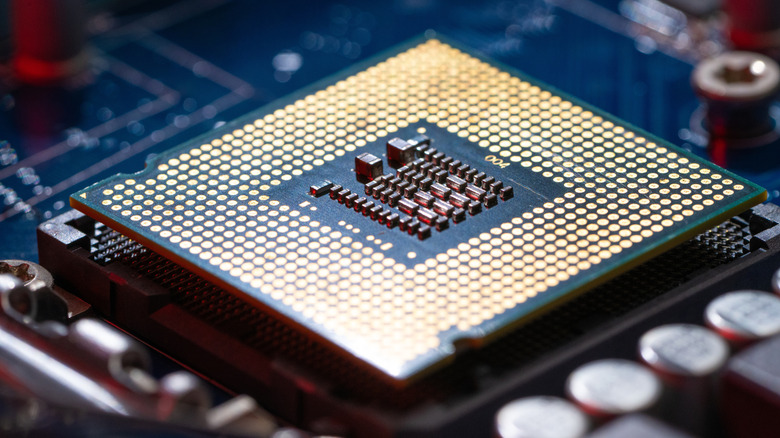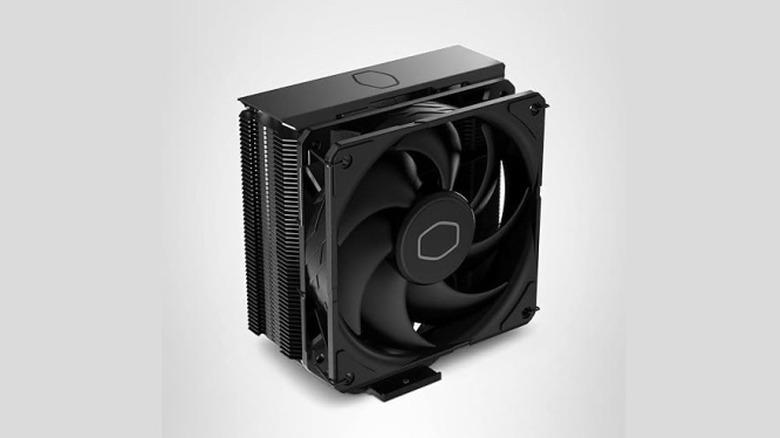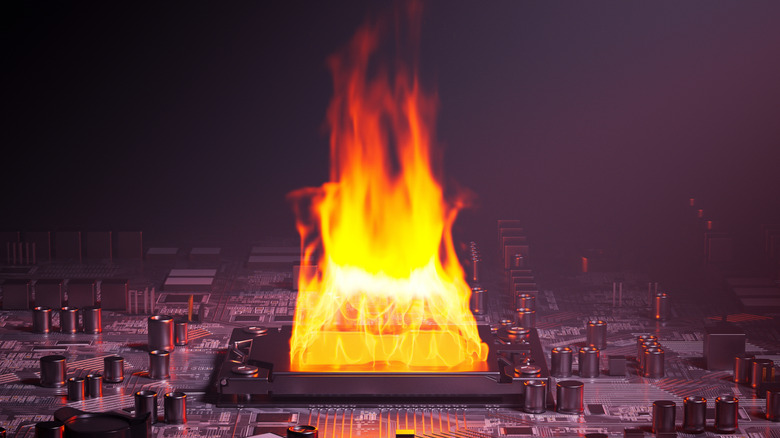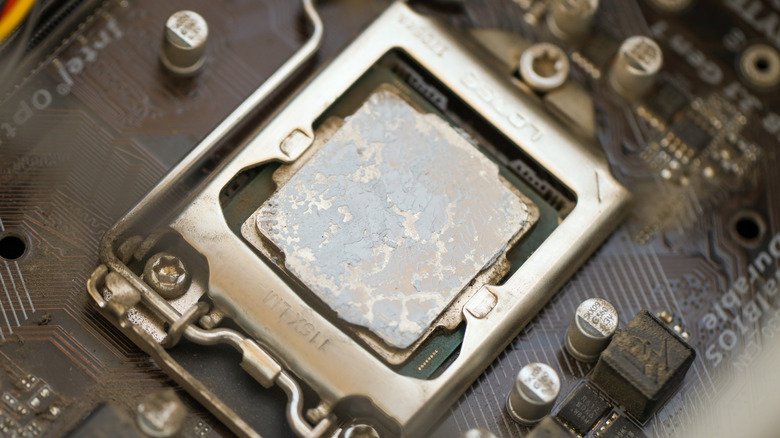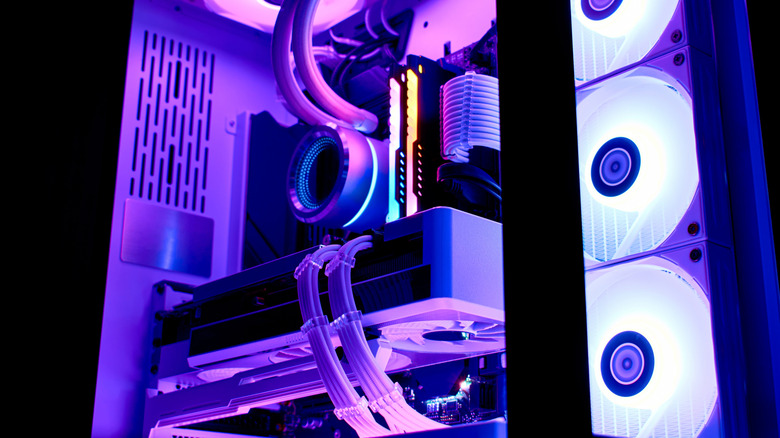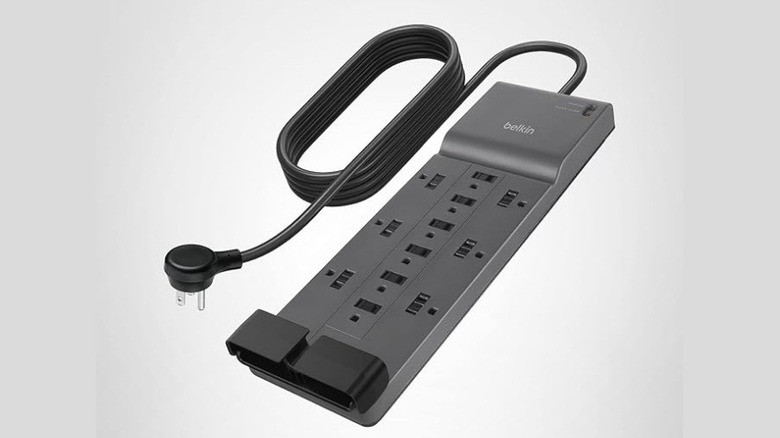5 Ways To Extend The Lifespan Of Your CPU
We may receive a commission on purchases made from links.
The CPU, or central processing unit, is the nerve center of your computer. Nothing else works without its calculations. Games need it to run their NPCs and physics engines, social network apps use it to collect messages in the background, and the browser couldn't keep all those tabs open without it. As luck would have it, CPUs can last a long time. These days, it's quite rare for them to go kaput; They're probably going to become underpowered and be replaced before they ever break. But that doesn't mean you should throw the CPU onto the motherboard and forget about it. Taking care of your CPU extends its lifespan, but it could also improve performances.
Even if your CPU will likely continue to live on after becoming obsolete, there are good reasons to ensure its longevity. Moving to Linux from Windows 11, for example, means that this "underpowered" CPU will still serve you well for many, many years to come. Whatever your reason is, keeping a CPU in tip-top shape is easy, taking only a couple of hours a year, at most. These are five ways to make your CPU work well for the full duration of its natural life, and maybe longer.
Get a decent cooler
If your CPU is not getting as much cooling as it deserves, there's a good chance the cooler is to blame. CPUs can reach 80 degrees Celsius and above when under load, so a weak fan is cause for concern. Stock CPU coolers are designed for the processor they come with, but not always for temperatures this high. At best, a PC running too hot will hit thermal throttle and tank your performance. At worst, temperatures may cause permanent damage. Proper cooling prolongs your CPU's lifespan and gives you better performance.
An affordable and reliable solution is a CPU tower cooler. Take this Cooler Master Hyper 212. Like most tower coolers, it uses copper heat pipes to transfer CPU heat to a heat sink, then disperses the heat with a fan. A good air cooler will easily do the job for the vast majority of people. We recommend having two fans for your CPU cooler (one to push air into the sink, one to pull it out the other side), since most coolers only come with one. The only downside of coolers like these is that they can be quite tall, so you should look for one that fits in your case.
Getting a liquid cooling kit for your processor is ideal if you need to keep your CPU under heavy, sustained loads. Just bear in mind they're more expensive and may be a bit trickier to install.
Watch out for high temperatures
Even when the proper cooler is in place, don't dust off your hands just yet. You should check your CPU temperature from time to time, especially when your computer is under load. It's totally normal if your CPU can cook eggs at 80 degrees Celsius while playing a demanding game, but it shouldn't sit there for too long or go much further beyond that threshold. We recommend checking with your CPU's manufacturer to determine your processor's Thermal Junction Maximum, also known as the Tj. Max. If your CPU gets near (or goes beyond) the Max, it's time to be worried. Your PC will automatically shut off before the point of no return, but a shutdown like that should still worry you.
The easiest, no-nonsense, and free way to check CPU temperatures is to use CoreTemp. CoreTemp tells you your Tj. Max and gives detailed readouts on every core of your processor. Open it while playing an intensive videogame or heavy software and see in real time how laborious those tasks truly are.
Consider running a PC stress test with something like UserBenchmark, too, to get an idea of your typical operating temperatures. This should give you a good idea of the heat your CPU reaches when being pushed, so you can see if it's rubbing shoulders with the Tj. Max. High temps might mean it's time to upgrade your cooling solution, lower the load on your CPU, or relocate your computer tower to a more ventilated space.
Change the thermal paste regularly
If you've built your own PC, then you know that thermal paste is a non-negotiable necessity. This is that (typically gray) goop that you daub onto the CPU's top plate before screwing in the heat sink. Unfortunately, thermal paste is not a fire-and-forget solution. Occasionally, you will need to replace it. How often you should change thermal paste depends on who you ask. Some recommend changing it every six months, and others say you can safely leave it untouched for years, or until your CPU starts struggling. That said, thermal paste will eventually dry out and lose its properties as a thermal medium.
Since you should probably be opening your computer to dust it out at least once every six months, we recommend killing two birds with one stone and changing the thermal paste at the same time. It's easy, and won't take longer than 10 minutes. Carefully remove the old paste from the CPU and cooler with a paper towel, then use isopropyl alcohol to clear away any residue. A cotton swab is highly recommended to get into the corners. Check if the thermal paste has expired before using it; If it isn't a thick, consistent, wet compound, it is a no-go. And whatever you do, do not get thermal paste on the CPU pins.
Don't overclock the CPU too much
Overclocking used to be something only enthusiasts would dare to try, but nowadays, anyone can overclock their gaming PC with a few software toggles. However, overclocking can damage your CPU or reduce its lifespan. If you're hellbent on overclocking, then cooling needs to be down pat. Having a good CPU fan and a case with proper airflow is no longer a recommendation; It becomes a requirement. Plus, an overclocked PC requires more frequent temperature monitoring.
Be mindful of how long you run your CPU at high temperatures. While a CPU can safely sustain a heavy workload for hours, it is possible that this will affect longevity. Consider giving your CPU a break every few hours during long weekend gaming sessions, or any other sustained activity; Close the software and let the CPU cool down to idle while you take a bathroom break or eat a meal.
Protect the PC from power surges
You really ought to ground yourself before touching computer components. Static electricity may seem inconsequential, but even that small spark can cause damage to the delicate electronics in your computer — especially your CPU. In a similar vein, your CPU is susceptible to other risks like power surges. Avoid plugging your computer directly into the wall. Investing in power protection is going to be a lot cheaper than replacing that rig you spent hundreds of dollars on after it suffers damage from a power outage or thunderstorm.
There's really no excuse to not spend a measly $30 to get yourself a nice surge protector, like this 12-Outlet Surge Protector Power Strip from Belkin. We also recommend a UPS, budget permitting. A UPS is a dedicated backup battery that keeps your computer running long enough to turn it off safely after a power outage. They're not cheap, though, with a simple Amazon Basics UPS retailing for $176.29. That said, UPSs tend to include surge protection, so they're an all-in-one solution.
Power users with a bigger budget may wish to purchase a PDU, or power distribution unit, like the StarTech 8 Outlet PDU Power Strip. PDUs are ideal when you might be running a lot of expensive hardware alongside your PC, like a home theater setup or NAS storage. That said, the vast majority of people will be more than happy with just a quality surge protector power strip.
